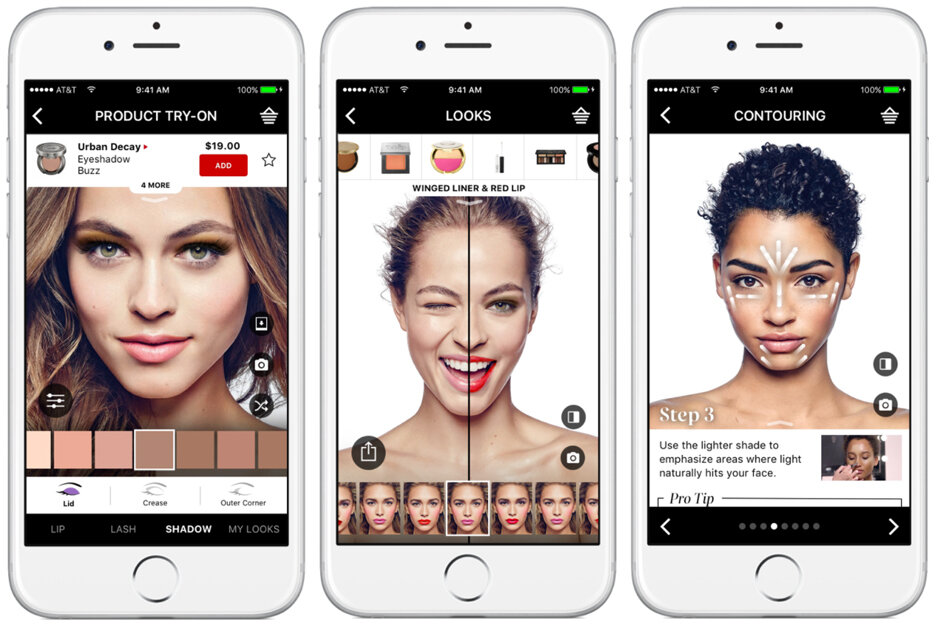AR ecommerce and 3D ecommerce: how they’ll transform retail
Blog -
As the world moves online, augmented reality ecommerce and 3D ecommerce allow consumers to interact with your product listings without leaving their home. Making the digital world more tangible in this way will become increasingly necessary for ecommerce stores, as pandemic-driven trends become long-term behavioural changes.
Across society, what was a slow move towards increased use and adoption of digital technologies turned into a torrent of change as businesses and individuals embraced technology to adapt to the “new normal.”
In response and due to the necessity of staying connected during lockdowns, everyone from school teachers to senior citizens is now spending more time online than ever before. For ecommerce stores, this change in consumer behaviour has driven sales to the point where ecommerce now makes up more than 30% of all retail sales in the UK.
However, even though the ecommerce market is growing significantly in light of the COVID-19 pandemic, so is competition.
While it’s difficult to assess how many new ecommerce stores were created as a result of the pandemic, it’s telling that between March and April 2020 the number of stores created through Shopify, the Canadian multinational e-commerce company, increased by 62%. It’s not just retailers that are moving online for the first time, either. Big brands such as Nike also see the pandemic as a catalyst for improving their own direct-to-online consumer offering.
Augmented reality ecommerce and 3D ecommerce meet customer expectations

For ecommerce stores, getting ahead of long-term shifts in consumer behaviour has long been the key to maintaining sustainable growth. In the post-pandemic world, this is especially true. Allowing customers to experience a personalised shopping experience has always been important, but with consumers now expecting these kinds of experiences as standard, it has now become essential.
A lack of personalisation is fast becoming the primary stumbling block for most buyer journeys. When it comes to ecommerce, consumers want to interact with your products before they buy to get a semblance of the in-store shopping experience. Not being able to do so makes the shopping experience more abstract and ultimately impersonal — something that 71% of consumers report as a significant source of frustration. When customers can’t try on or physically inspect their prospective purchases, they’re more likely to buy the wrong thing for them and ultimately return it back to you.
By leveraging 3D product modelling and augmented reality, online retailers can get ahead of these frustrations. In doing so, they can give their customers a more tactile, immersive and ultimately more satisfying experience that is more likely to result in completed sales.
Once fancy buzzwords, augmented reality and 3D modelling are now practical tools for ecommerce brands of all sizes.
So how can 3D modelling and augmented reality help ecommerce sites retain their edge?
Augmented reality reduces returns by letting customers try your product on virtually

Imagine you’re a keen swimmer and are looking for a new pair of swimming goggles. You want to buy online but would still like to see how that pair looks before you take the plunge.
An augmented reality experience, just like the one we recently created with Speedo, allows customers to do just that. Leveraging the power of customer smartphones, augmented reality ecommerce experiences give buyers a chance to see what your product looks like on their face or in their space before they buy it. The Speedo AR experience, for example, was implemented in-store and on their website during the check-out process. Other examples of augmented reality ecommerce experiences include furniture visualisation, where customers can see what a piece of furniture would look like in their environment before buying.
For retailers, the advantages of offering an augmented reality buying experience, whether based on face filters or world effects, are numerous.
Not least, a try before you buy option can cut down on the estimated £60 billion that returns cost ecommerce retailers every year. This experience is also something that customers want and, increasingly, expect; over 75% of consumers now anticipate an augmented reality experience when shopping online.
3D product modelling drives conversions by mimicking the in-store experience

While the gap between online and in-store sales is narrowing, closing it will mean giving online retailers more of the “stickiness” that in-store shopping creates. What entices customers back to in-store shops is ultimately the ability to check out potential purchases from different angles and weigh them up versus other options.
By incorporating 3D models into product pages, you can empower users to interact with them and view them from multiple angles while browsing, giving them back some of that sensation. Doing so can also dramatically increase their chances of completing a sale because it increases their confidence that the product is right for them.
For stroller retailer Bumbleride, the implementation of 3D models in their online store led to a 33% increase in their conversion rate for strollers and a 21% increase in visitors’ average time on site.
Similarly, US-based clothing retailer Overstock reported conversion rate increases of between 10 to 200% after they started using AR combined with 3D modelling.
Embracing the future of AR and 3D ecommerce
In the post-pandemic world, ecommerce will undoubtedly continue to become more popular due to the long-term impact of global digital transformation. However, retailers also need to adapt and give consumers the confidence to make bigger and more frequent purchases digitally.
Doing so means enabling augmented reality ecommerce and/or 3D ecommerce to bring across the best moments of in-store shopping to the online experience.
Incorporated into an ecommerce flow to give customers a personalized “try before you buy” shopping experience, 3D modelling and augmented reality allow brands to meet these challenges head-on.
If you’re interested in kickstarting your own augmented reality ecommerce or 3D ecommerce experience, or would like to discuss a potential campaign, please don’t hesitate to get in touch now to get started with your first AR campaign.


